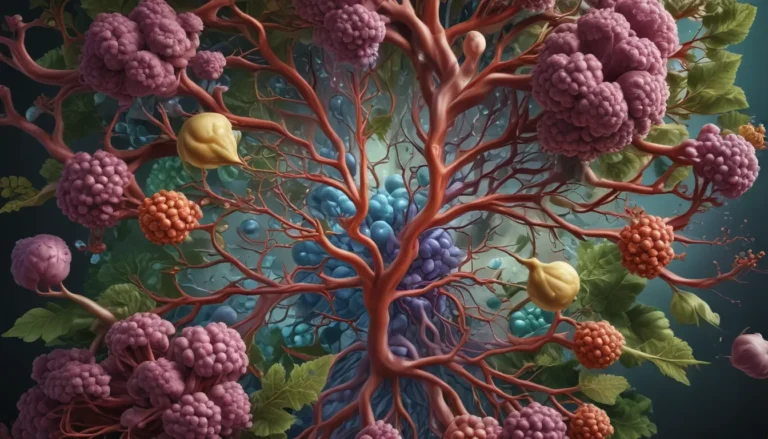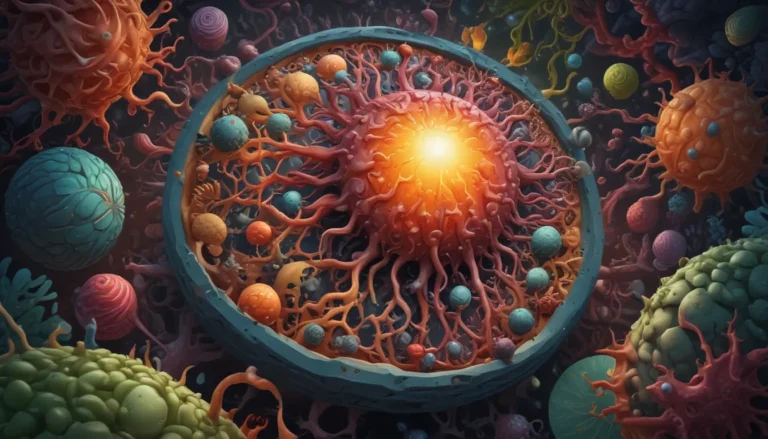A Note About Images: The images used in our articles are for illustration purposes only and may not exactly match the content. They are meant to engage readers, but the text should be relied upon for accurate information.
In the intricate world of biological systems, the active site stands out as a pivotal and remarkable component. Playing a crucial role in enzyme catalysis, protein-ligand interactions, and various metabolic processes, the active site is a microscopic powerhouse that drives the underlying machinery of life. Let’s delve into eight extraordinary facts about active sites, shedding light on their ability to facilitate chemical reactions and control biological processes.
The Active Site Unveiled: A Key to Enzyme Activity
At the heart of enzymes lies the active site, where chemical reactions come to life. Without this essential component, enzyme activity would cease to exist, emphasizing its significance in the realm of biological processes.
The Unique Shape of Active Sites
Each enzyme boasts an active site with a specific shape, akin to a puzzle piece that fits perfectly with its corresponding substrate. This lock-and-key mechanism ensures that only specific molecules can interact with the enzyme, highlighting the precision and specificity of active sites.
Embracing Change: Conformational Flexibility of Active Sites
Contrary to rigid structures, active sites can undergo conformational changes to adapt to substrates during enzymatic reactions. This dynamic flexibility allows for efficient catalysis and showcases the versatility of active sites in accommodating diverse molecules.
The Intriguing World of Active Site Inhibition
Active sites can face inhibition, halting enzyme activity. Competitive inhibitors bind to the active site, preventing substrate binding, while non-competitive inhibitors induce conformational changes in the active site from a different location.
Unveiling Allosteric Active Sites
Some enzymes harbor allosteric active sites, regulated by molecules binding to sites other than the active site. This allosteric modulation can either enhance or inhibit enzyme activity, adding an additional layer of complexity to active site functionality.
Precision Personified: The High Specificity of Active Sites
Active sites exhibit remarkable specificity towards substrates, discerning subtle structural differences in molecules with precision. This specificity enables active sites to catalyze specific reactions efficiently and accurately.
Catalysts of Life: Active Sites in Enzyme Catalysis
Providing a conducive environment and functional groups for chemical reactions, active sites play a pivotal role in enzyme catalysis. They stabilize transition states, break and form chemical bonds, and lower the activation energy of reactions, ensuring the smooth progression of biochemical processes.
The Vital Role of Active Sites in Biological Processes
Active sites are indispensable for an array of biological processes, including metabolism, DNA replication, protein synthesis, and signal transduction. Their absence would lead to inefficiencies in these processes, underscoring the irreplaceable role of active sites in biological functions.
Unraveling the Enigmatic Active Site
In summary, the active site emerges as a captivating and essential element in the tapestry of biological systems. From its ability to catalyze reactions with precision to its dynamic nature, the active site embodies the complexity and significance of enzymatic reactions. Understanding the mechanisms of active sites not only advances our knowledge of biological systems but also holds practical applications in drug development and therapeutic interventions for various diseases.
FAQs
-
What is the active site?
The active site is a region on an enzyme where substrates bind and undergo chemical reactions, crucial for enzymatic activity. -
How does the active site enable enzyme function?
Providing a suitable environment for substrate binding and interactions, the active site facilitates chemical reactions, catalyzing specific biochemical processes. -
Can the active site change its shape?
Yes, the active site can undergo conformational changes, adapting to different substrates and enhancing the versatility of enzymatic reactions. -
How does the active site ensure specificity?
The unique structure and chemical properties of the active site confer high specificity, allowing for precise recognition and binding of specific substrates. -
What happens if the active site is disrupted?
Disruption of the active site can lead to impaired enzyme function and a loss of catalytic activity, impacting biological processes and cellular functions. -
Can the active site be targeted for drug development?
Yes, targeting the active site of enzymes is a common strategy in drug development, facilitating the design of molecules that modulate enzyme activity for therapeutic purposes. -
Are all active sites the same?
Active sites vary in structure and chemical properties depending on the enzyme and its function, with each active site uniquely tailored to interact with specific substrates. -
What are examples of enzymes with unique active sites?
Enzymes like DNA polymerase and amylase showcase unique active sites tailored to their roles in synthesizing DNA molecules and breaking down complex carbohydrates, respectively.
Embracing the Mysteries of Competitive and Noncompetitive Inhibition
Competitive and noncompetitive inhibition stand as pivotal mechanisms in regulating cellular processes, shedding light on how active sites interact with inhibitors. A deeper exploration of these intriguing concepts will enhance our understanding of the intricate biological pathways that sustain life’s delicate balance.
Trustworthy Information, Enlightening Insights
Our dedication to delivering reliable and engaging content is evident in each fact shared on our platform. Real contributions from users like you ensure a diverse wealth of insights and information, meticulously reviewed by our editors to maintain the highest standards of accuracy and authenticity. Explore, learn, and grow with us as we continue to unravel the fascinating world of active sites and biological mysteries.






